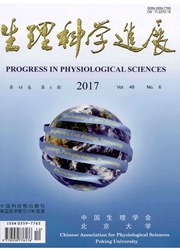

 中文摘要:
中文摘要:
脂蛋白脂酶(lipoprotein lipase,LPL)主要在脏器实质细胞合成和分泌,可以水解乳糜微粒(chylomicron,CM)、低密度脂蛋白(low-density lipoproteins,LDL)及极低密度脂蛋白(very low-den-sity lipoproteins,VLDL)中的甘油三酯(triglyceride,TG),对清除体内过多的TG至关重要。新近研究发现LPL的基因结构、合成、分泌及降解具有复杂性,生物功能的发挥和基因的表达也受到多种转录因子、微小RNA(microRNA,miRNA)、相关蛋白及营养激素的调控,其在动脉硬化性疾病中的作用也存在较大的争议。因此,本文主要针对LPL基因的结构、合成与降解、生物功能、表达调控及与动脉硬化性心血管疾病关系的研究进展做一综述,以期进一步明确LPL在心血管疾病中的作用和意义。
 英文摘要:
英文摘要:
Lipoprotein lipase (LPL) which is the rate-limiting enzyme for the hydrolysis of the triglyceride (TG) core of circulating TG-rich lipoproteins, chylomicrons, low-density lipoproteius (LDL) and very low-density lipoproteins (VLDL) play an important role in reducing TG deposition in vivo. Recent advances indicate that LPL gene structure, synthesis, secretion and degradation had complexity, and it is regulated by many transcription factors, miRNA, interactive proteins and hormonal. Its role in atherosclerosis in the current studies is still controversial. So we focus the LPL on the structure, synthesis and degradation, function, regulation and contribution to atherosclerosis to clarify its role in cardiovascular disease (CVD).
 同期刊论文项目
同期刊论文项目
 同项目期刊论文
同项目期刊论文
 MicroRNA-19b promotes macrophage cholesterol accumulation and aortic atherosclerosis by targeting AT
MicroRNA-19b promotes macrophage cholesterol accumulation and aortic atherosclerosis by targeting AT Growth differentiation factor-15 induces expression of ATP-binding cassette transporter A1 through P
Growth differentiation factor-15 induces expression of ATP-binding cassette transporter A1 through P 期刊信息
期刊信息
